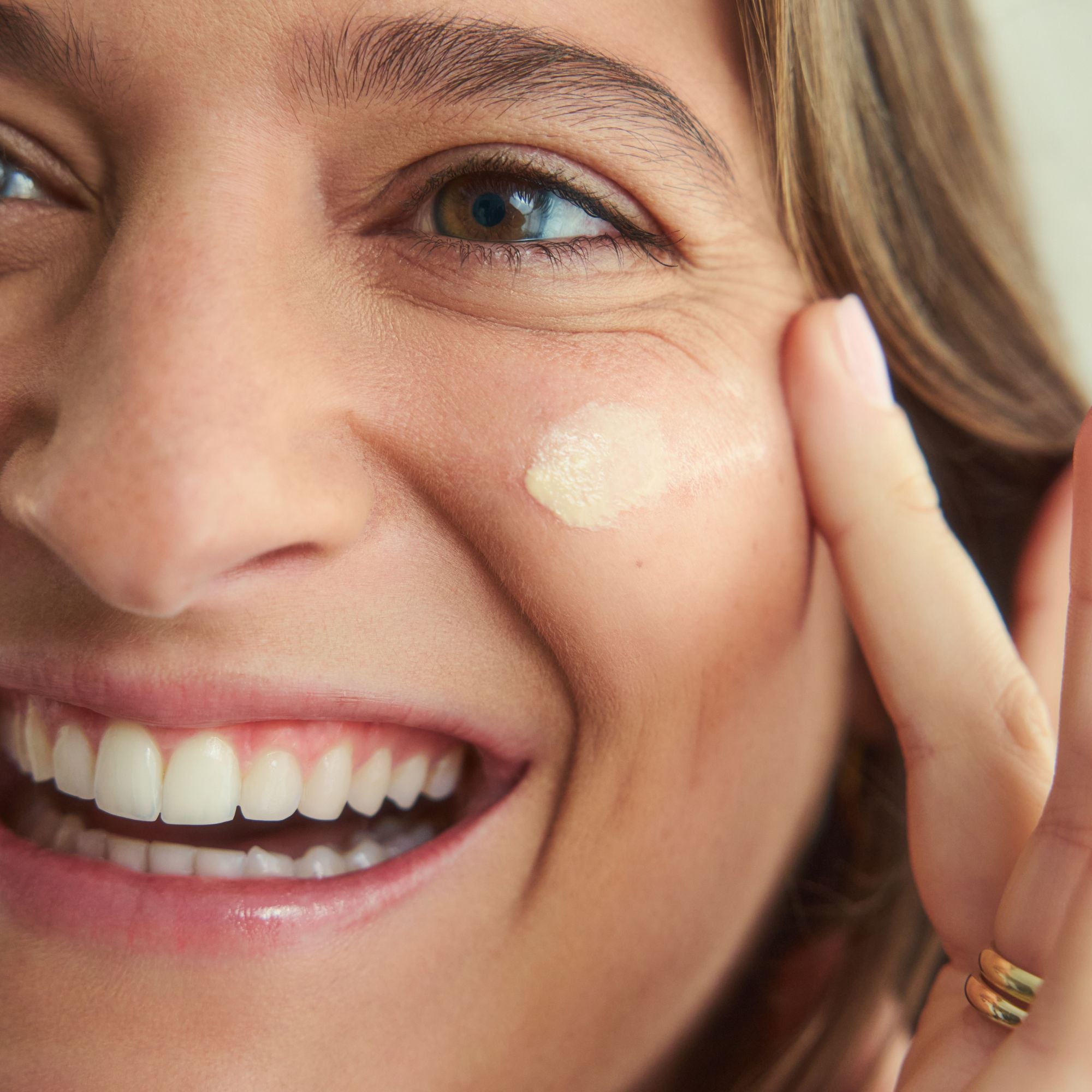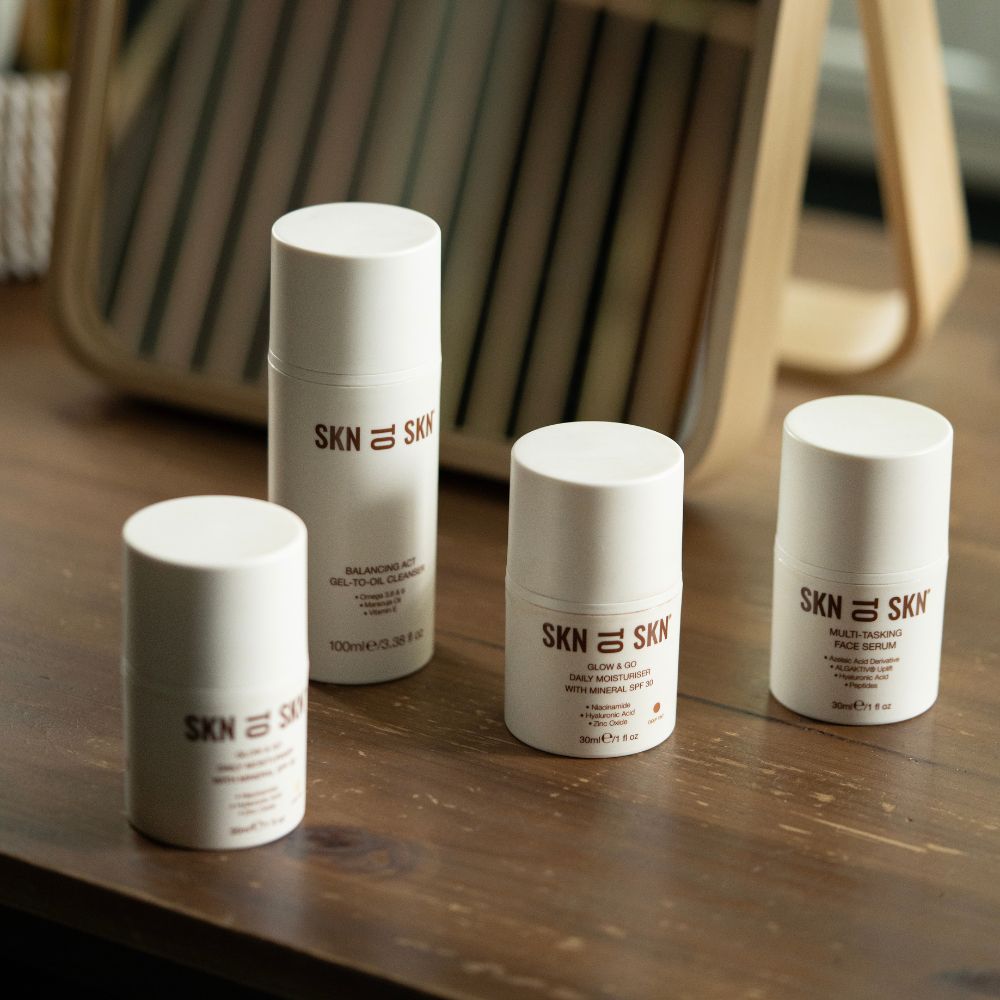Have you ever researched “exercise during pregnancy” only to feel more confused than when you started? You’re not alone. Much like navigating skincare ingredients, it can be tough to know which information is trustworthy.
That’s why we spoke with Jenny Francis, Head of RWL: Bump & Baby fitness app, to answer the most common questions and break it all down in a clear, straightforward way.
What types of pregnancy-safe exercises are recommended for each trimester?
This is such a common question. The answer depends on one thing: what exercise were you doing before you fell pregnant?
If your body is used to exercise, it’s largely safe to continue doing it throughout your pregnancy BUT there are things to AVOID in each trimester.
Trimester 1:
Unless you have complications with your pregnancy, you can continue with all forms of exercise.
The only things to avoid are:
- Hot yoga, or exercising in extremely hot weather
- Exercise that can have a high risk of falling like horse riding, skiing and box jumps
Trimester 2:
As your bump starts to grow, it’s important to adjust certain exercises to keep both you and baby safe.
For example, chest-to-floor burpees should be modified to a high plank version to reduce strain. Core exercises also need to be carefully adapted, moves that create intense downward pressure on the abdominals, like sit-ups, should be avoided.
Instead, opt for safer alternatives such as bear holds, bird dogs, and dead bugs, which help maintain core strength without risking injury.
Trimester 3:
In the third trimester, you’ll want to follow the same general guidance as in the second trimester, plus make a few key adjustments to accommodate your growing bump.
For example, exercises like squats may need to be modified by standing with your feet wider apart to create more space and maintain balance. It’s also important to avoid lying on your back for extended periods; while a few minutes is generally fine, staying in that position too long can restrict blood flow to the baby and placenta due to the weight of the uterus pressing on major blood vessels.
What are the best quick home workouts for mums with only 10 minutes and no gym equipment?
The honest answer here is - the ones you want to do!
Pregnancy is tough, especially when you are poor on time, so choosing a workout style that you fancy that day is key to actually doing it.
If the thought of cardio makes you queasy, maybe try barre or Pilates.
If yoga is a turn off, go for an energy boosting cardio circuit.
Just keep it short and follow a prenatal app that gives you options. RWL Bump & Baby is great for this.
What are the best exercises to relieve lower back and hip pain during the third trimester of pregnancy?
Mobility, mobility, mobility. You want to keep your spine, hips and pelvis moving - and while stretching is great, mobility is what keeps all that lovely fluid moving through your joints.
Cat cows are one of the best exercises for this.
Not only do they loosen your muscles, they also stretch your muscles, strengthen your pelvic floor and core muscles - all incredibly important when preventing back and hip pain.
When is it safe to start exercising after giving birth, and what are the best postpartum exercises to begin with?
You always want to wait at least 6 weeks before returning to exercise. If you have had a c-section or any complications after your birth you may want to wait longer, but always check with your gp or midwife.
The best exercises to begin with are deep core.
Your core muscles will likely be separated after having children so deep core recovery is key to your long term fitness success.
Try these bear holds to start with. Bodyweight squats are also great as they help reconnect different muscle groups, build back leg strength and are a safe movement without impact.
Bear hover:
Start on all fours with your toes tucked under and hands underneath shoulders
Take a deep breath in and focus on filling your belly with air - letting it expand.
From here, breath out with control and as you do, tuck your pelvis under, push into your hands and feet and squeeze your core and pelvic floor as you lift your knees a few inches off the floor and hold them there.
Hold for 5-10 seconds, then as you control your exhale out, let your core muscles relax with control, relax your pelvic floor and allow your knees to return to the floor.
Perform 10 of these.


What exercises help with postpartum recovery, especially for rebuilding core strength and pelvic floor function?
Deep core and pelvic floor is KEY. Try NHS approved online programmes like Mamma Rebuild for structured programmes that guide you through 10 minute sessions that repair your core, flatten your rounded tummy, prevent back pain and help you return to your favourite sport or exercise stronger.
These are my two favourites.
- Tucked knee side plank
Start lying on your side with your legs bent, knees stacked on top of each other and your upper body resting on your forearm.
Take a deep breath in and focus on filling your belly with air - letting it expand.
From here, breathe out with control and as you do, tuck your pelvis under, and squeeze your core and pelvic floor. As you do this, push into your forearm and feet and lift your hips off the floor.
Hold for 5 seconds as you continue to exhale, then as you control your exhale out, let your hips return slowly to the floor, relax your pelvic floor and allow your belly to expand.

- Leg extensions
Start lying on your back.
Bend your knees and lift your legs off the ground so they are in a “table top” position.
Tuck your pelvis under and lift your pelvic floor in to push your lower back into the floor and keep it here the whole time.
Take a deep inhale and extend one leg slowly out straight while keeping your lower back pushed into the floor.
As you exhale, slowly draw your leg back to tabletop and squeeze your core.
Repeat on the other side.

Are there specific exercises that support recovery after a c-section?
After a C-section, there isn’t that much you need to do differently to a vaginal birth recovery - unless you have had complications in surgery.
Again, it's crucial to prioritise a gradual approach to exercise recovery and wait 6 weeks to get sign off from your gp before doing anything other than walking.
Your focus then should be following a postnatal return to fitness programme. I have an 8 week programme which has strength, cardio, Pilates, barre and more - all doable from the gym or at home.
This gives you complete confidence on getting your body back into movement.
Activities like walking and again, deep core and pelvic floor exercises, will help repair your tummy. Heavy lifting should be avoided for longer to prevent injury - unless told otherwise, avoid lifting very heavy weights for 6 months.
As a mum of two, how do you make time for fitness in your daily routine?
It’s very hard. But the main thing for me is making it a priority in the same way brushing my teeth and showering is.
Once I make it part of my weekly routine, it becomes achieveable as it’s a habit - just like showering.
Yes, there are days that grabbing a shower aren’t possible, but then I know that the next day, I need to fit one in.
Same with workouts. Some days I can’t fit in a workout, so the day after, I make the time - whether it’s 10 minutes on my lunch break, 30 minutes before the kids get up, or 20 minutes before the nursery pick up.
I also remind myself that I’m worth it. That it’s not selfish or something I should feel guilty about. It’s important for me to be able to be the best mum I can be. And that helps too.
Can regular exercise help with fertility? What types of workouts are best when trying to conceive (TTC)?
Yes absolutely! It can be a hugely powerful tool to help women trying to conceive.
Exercise helps regulate your hormones, reduces stress, improve mood and sleep, and helps reduce body fat to maintain a healthy weight, all of which are important for your reproductive health.
Any exercise is good for this, although it can be good to avoid any extremely high intensity workouts as they can increase rather than reduce your stress hormone.
If you are a beginner trying to conceive I would recommend walking (at a good pace), home workouts, strength training, Pilates and yoga.
Finding a good fitness app that works specifically with women is a great place to start if you think you can benefit from community support too and advice from experts.
Mamma Rebuild 21 day core repair challenge is available NOW for just £29.99 - unlimited lifetime access.






